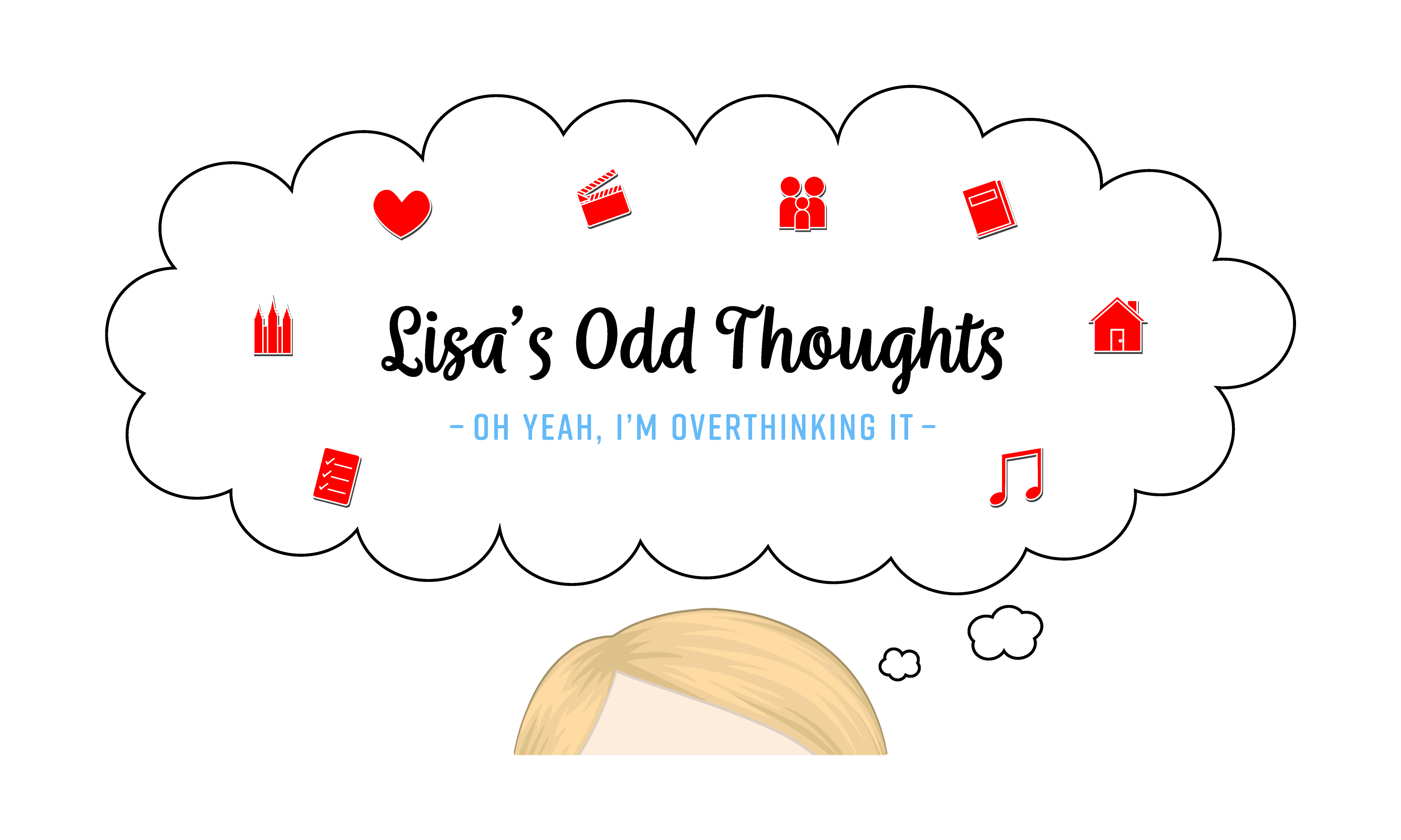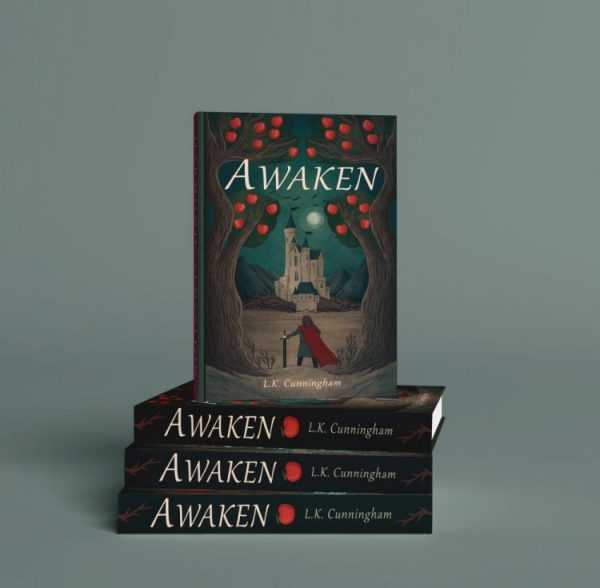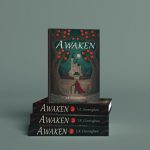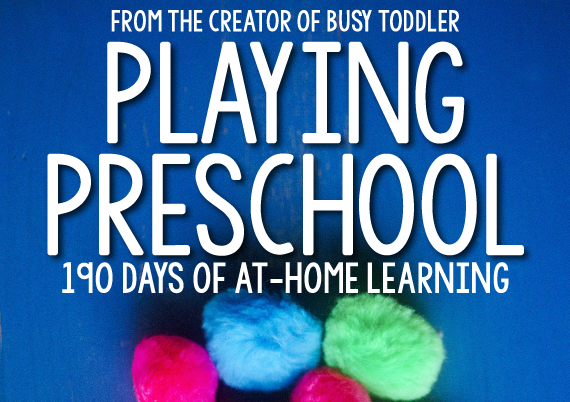Big announcement! I’ve accomplished a lifelong dream and published my first novel, “Awaken,” a Sleeping Beauty retelling. You can officially buy it HERE.
Growth and Variations Through the Drafts
I had a fairly solid outline for my sleeping beauty retelling which you can read about in Part 1 of this series. But there were lots of little gaps and pieces that had to be filled in and polished as I worked on the novel. I’m here to document some of those variations that I considered and used for a time, but ultimately went to the chopping block. Let’s begin!
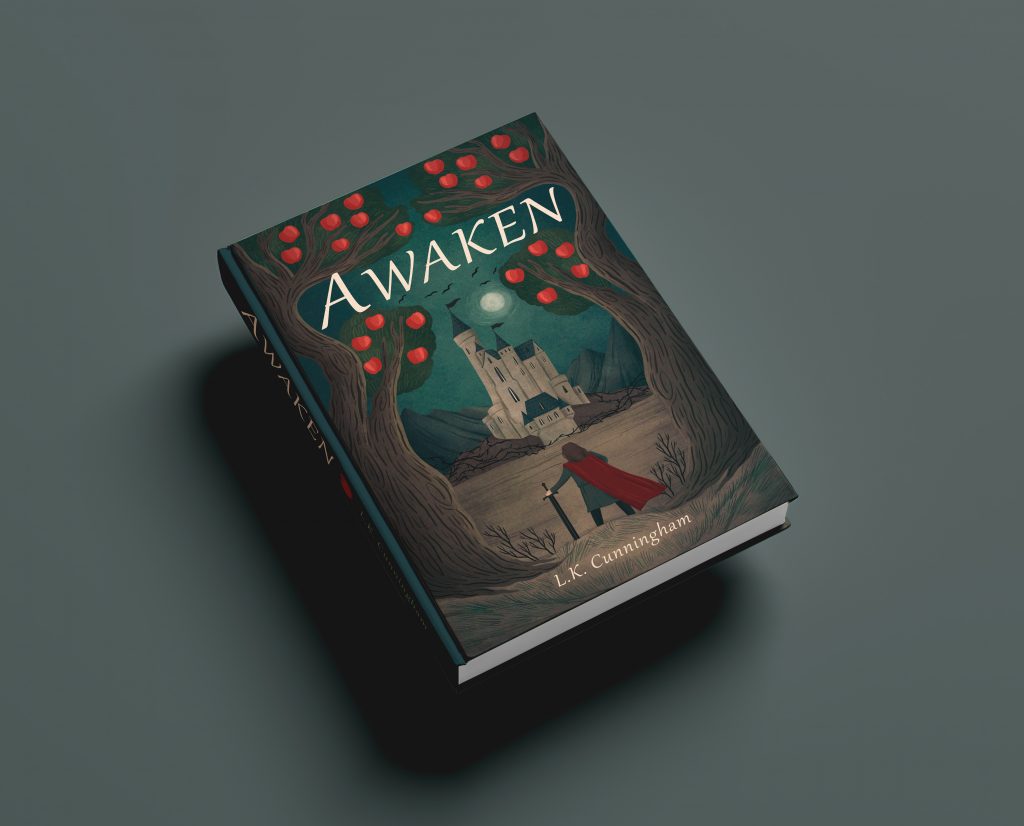
Names
I detailed my inspiration for naming Prince Jonathan in the Part 1 of this blog post series, so I won’t repeat that here. Suffice it to say, at an early stage of writing I didn’t have many permanent character names except for four: Jonathan, Lily (a name I picked simply because I think it’s beautiful), Nicholas, and Rachael (both were named in my previous novel and make a cameo appearance in “Awaken”; again, see the Part 1 of this blog post series for more details). Most other character names fluctuated and changed all over the place. But as the story really began to settle and take shape, I found a greater need to finalize some permanent names.
I also needed filler names fairly regularly, names of servants or innkeepers or distant relatives who only appeared once. Unfortunately I found myself accidentally using the same small handful of filler names over and over and over again, having forgotten that I’d used them before.
So I began researching the four names that I originally had and loved: Jonathan, Lily, Nicholas, and Rachael. I’d already had in mind that Jonathan would go by the nickname John as a cover for his true identity, and both those names had a Hebrew origin. And would you believe it, but the name Rachael was also Hebrew. In my other unfinished novel, Rachael was from the country of Aldrenland, and coincidentally in that novel she has a father named Jared, another Hebrew name. Therefore, I concluded, that all characters from Aldrenland would have Hebrew names.
Jonathan, of course, isn’t from Aldrenland, but he’s from Candlewood. However, I already in place Jonathan’s family history where his mother had been a foreign princess from another country before marrying the Candlewood king. This revelation solidified that his mother and his ambassador uncle would also come from the neighboring Aldrenland, and so they would also need Hebrew names. Logic would surely dictate that a foreign princess would name her firstborn son a traditional name from her own land and language, hence we have Prince Jonathan. (Her second son she allowed her Candlewood husband to name, which is why Jonathan’s brother Andrew has a traditional Candlewood name.) And so were named Queen Ava and Uncle Joseph.
Other Hebrew names noted in the novel are the two university professors Jonathan speaks to, Tobias and Eli. While this fictional university draws students from various nations, these Hebrew names would indicate that these two professors are also from the country of Aldrenland, where the university is located.
Not only did this provide some lingual foundation for me to pull character names from, but it provided Prince Jonathan with a brilliant alibi when he needed it. I imagined and wrote several scenes in which he uses his Aldrish/Hebrew name of John as a cover for his true identity, pretending to be from Aldrenland instead of from Candlewood. Those scenes were ultimately cut from the final manuscript, but they still exist in my personal, internal canon.
Then I looked at the name of Nicholas, which I learned was Greek. Seeing as Nicholas was from Candlewood, all characters from that country then were also named with Greek names, most notably Damon, Andrew, Diana, and Melissa.
Lily’s name, I learned was English, which easily lent itself to other English names for the country of Relderland such as Alice, Gerald, Clarice, and Brett. After the fall of the Relden castle, the citizens eventually fled the country due to the poisoned land. Refugees from Relderland could easily be distinguished by their English names. I also imagined that after such a mysterious and frightening event at the Relden castle and the later murder of the Candlewood King Damon in Relderland, other nations became untrusting and even superstitious of Relden people, easily distinguishing them and discriminating against them based on their English names.
After that, I only had to fill in my other two fictional countries. Nordenland uses French names, seen in Leon the barkeeper. For Swendon I ultimately settled on a combination of Welsh and Irish names like Gwen, Megan, Liam, and Finn.
I will draw you attention to a particular scene from the novel as an example of how I used these names. Prince Jonathan goes to the Swendon castle to try to rescue the royal family where he meets Finn and his pregnant wife, Diana. Finn, the Swendon prince and son of Megan and Liam, has an Irish name. His wife, however, has the Greek name of Diana, indicating that she is from Candlewood. Indeed, we learn that Diana is the granddaughter of the Candlewood King Andrew (through his daughter’s line), which is also why she has family in Candlewood where she can go for safety after she and Finn and driven out of Swendon.
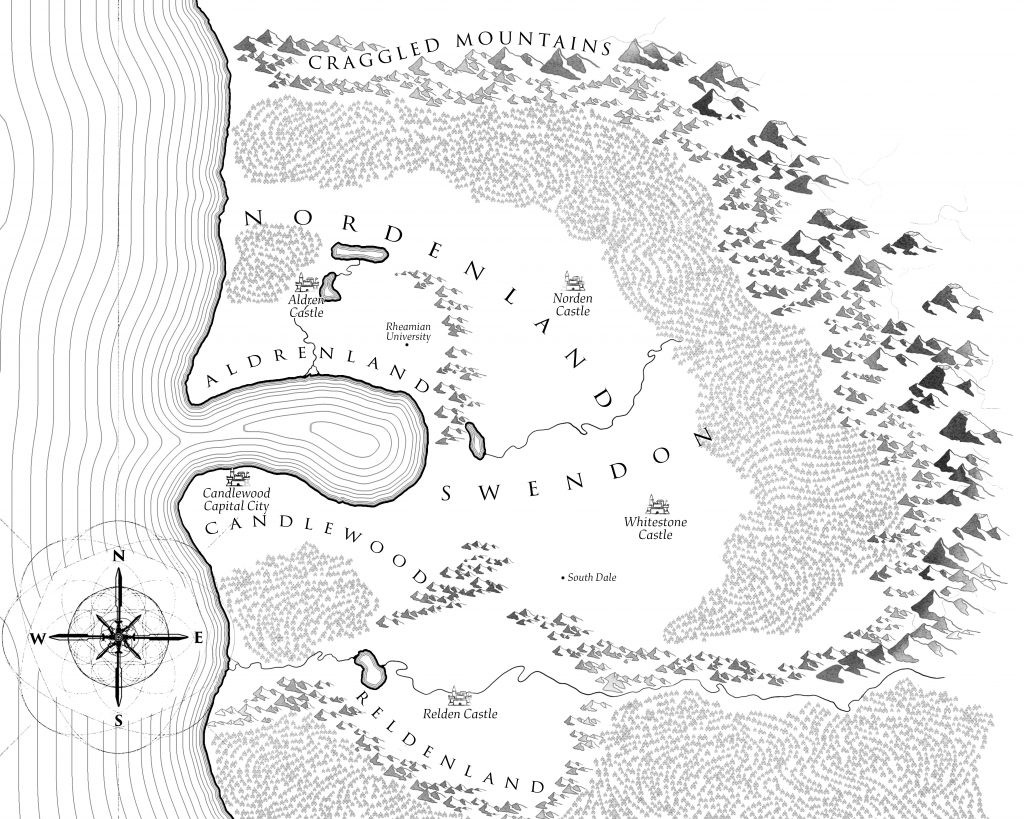
Queen Gwen’s Story
Queen Gwen went through a few different reiterations before she settled down.
At first Gwen was the daughter of a nobleman with a gambling addiction who had gambled away all his wealth until his daughter, Gwen, was forced into servitude to pay off his debts and financially support herself. This daughter felt that she was above such manual labor, having been originally born into wealth and privilege, and she begrudged her new life as a servant. It made her power-hungry and cruel. Note that this backstory, while it didn’t ultimately fit with Gwen, later became the backstory of Clarice, who became Princess Lily’s lady in waiting.
Eventually I knew that version of Gwen wasn’t quite right, and so I began working backwards. Firstly, the evil queen from the Snow White story is known for her beauty and vanity. Gwen, therefore, would be obsessed with her physical appearance. Further, I gave her a beautiful sister, Megan, to compete with. Not only was Megan naturally more beautiful than Gwen, but Megan was more well-liked and charismatic. Gwen, always jealous of her beautiful sister, became not only obsessed with being pretty, but also with being popular.
Since Gwen is one of the primary antagonists of the story, I also wanted her to be a foil for Prince Jonathan, and through the many drafts some stark similarities came out: they were both the older sibling and the first in line for the crown, but both were removed from their position against their will. Both their inheritances instead went to their younger siblings, although for drastically different reasons. While Jonathan still loved his family and retained his sense of duty toward them, even down to his great-great-great-nephew, Gwen went the opposite direction and she loathed and resented her sister’s family and descendants.
The final interesting note to make about Gwen is that in one version of the story she fell in love with Jonathan, but in a super gross, stalker-like way. While she remains obsessed with him in the final version, she’s more obsessed with his immortality than with him as a person. However, in an earlier version of the book, Gwen became romantically obsessed with him to the point of creeping on him in super inappropriate and intrusive ways, even trying to seduce him on multiple occasions. Even before she gained magical powers, Gwen regularly used her “feminine wiles” to try to get inappropriate attention from men, including Jonathan, as another way to compete with her sister, who was naturally sought-after by many men.
I ultimately hated this version of her character and scrapped this concept just because it was so completely unenjoyable to write. I can’t detail an exact reason why, except that I just hated it.
I think that part of the reason I hated this idea so much was that I couldn’t imagine Jonathan taking to her behavior so lightly as to let her just continue at it through the decades. He would have been so horrified by such disgraceful conduct that he would have put an immediate stop to her, thus ending my novel much too quickly and in a way I never intended. Perhaps I feared that such extremely inappropriate behavior might have unintentionally turned my prince into a murderer. Yikes!
But speaking of murders…
King Gerald and Queen Alice
Yes, Prince Jonathan ultimately kills King Gerald, I hear you argue.
Yes he does, but notice that it was in self defense, making it a killing and not a murder. He also later poisons the invading Swendon army to save his home country, but both he and I see this move as a painfully necessary wartime killing in order to save his people, not a brutal murder. As brilliant a swordsman as Jonathan is, he’s not a cold-blooded killer.
But let’s talk about King Gerald, the character who perhaps went through the most changes throughout this novel. He is the father of Princess Lily and, as we learn in the novel, is the reason that Mahldelle wants to seek her revenge against his daughter.
He went through many iterations. In the earliest drafts when this novel was just a short story, King Gerald had a minimal role and was mostly a filler character: the princess needed parents, and so here they were. So the king was actually a good guy, just a normal, loving, and caring father. Later, it was actually Mahldelle’s motivations that required him to serve a darker role, a man who would abandon his family for the rush of adventure and who would greedily betray his marital vows in return for fairy gold.
At first his character was only neglectful, an absent father who was bored by his own wife and kid and their mundane lives. But then I began researching and reading about the real-world emotional and mental damage to children caused by such neglect, and I read staggering and frightening statistics about how that kind of neglect so often leads to other types of abuse as well.
It was regrettably easy for King Gerald to start hitting his wife. I wasn’t sorry at all that he left the castle so regularly, because it meant that at least the queen was physically safe from him.
Several people, after reading the finished novel, have expressed to me that they were expecting King Gerald’s abuse to have some sort of purpose, like there would be a big reveal to explain it all away and he’d be redeemed, or he’d see the error in his ways and apologize and make everything right again. You’ll find no such happy ending in my novel for the king. He’s abusive because he himself was abused and he never figured out how to break the cycle (another unfortunate statistic I read about in my research). That’s it. As much as I wish it were different and that he was somehow redeemed, he never was. I think it’s just painfully tragic, but it unfortunately happens in real life like that all the time. This is a fairytale, yes, but not everyone lived happily ever after.
A funnier note: I coincidentally did a bulk of this research for King Gerald and Queen Alice’s relationship when I was very early married. I began reading tons and tons of articles about symptoms of emotional abuse and narcissistic spouses. Because I read so much, the algorithms on my Pinterest account kept suggesting articles and resources to help women escape abusive relationships, and I joked with my brand new husband that the internet thought I was married to an abusive, narcissistic jerk. Luckily for me, nothing could be further from the truth; I adore my husband, and he’s never been anything but kind and supportive toward me. Thank goodness!
Once King Gerald was established, I couldn’t figure out what to do with him for the longest time. In some versions I had him also fall asleep for the hundred years just like Queen Alice. That was his greatest fear, after all, and I so I thought that would be adequate punishment for him. I had the fairy Queen Mab force him to stay and fall asleep with his family.
But no matter how I tried to slice it, him waking up at the end and still being around to torment his wife and daughter would always be a sad ending for Queen Alice and Princess Lily. Particularly the queen, I felt, deserved the chance to start a new life without him, to fall in love for real and experience a happy, healthy relationship.
For the record, this is exactly the ending I wrote for Queen Alice. After Princess Lily woke up, Relderland was uninhabitable for many years as the poison slowly died away with the trees, during which Jonathan and Lily used King Gerald’s vast wealth to travel the world. Queen Alice went with them only as far as Aldrenland, where she met and fell in love with a lonely widower, whom she married. As far as I’m concerned, he adored Alice and treated her kindly, and the two lived happily ever after for the rest of their days.
Back to King Gerald. I eventually decided that he would stay awake and eventually die. But still, what to do with him? I wrote a few versions where he did indeed redeem himself and chose to help Prince Jonathan willingly, begging his forgiveness for his horrific past misdeeds. But that never sat well with me; it was too easy, too neat, and too predictable.
And so in the end I gave King Gerald the worst punishment I could think for him. The man was obsessed with gold and extremely greedy, so I cut him off. He became absolutely impoverished and had to resort to being a highwayman, a king only of robbers. It was a dirty and pathetic life and he was quite miserable, I can assure you. And of course, as mentioned above, he met his demise when Prince Jonathan finally killed him.
Let’s talk about Queen Alice. Like her husband, at first she was a very minor character and just a filler, but as the novel got bigger, her character got bigger too. For a while I actually considered her an antagonist, a strict, tyrannical, smothering mother who choked out her daughter’s life with her iron fist. I imagined her like Marlin, the father fish in Finding Nemo, who is so obsessed with protecting his son that he never lets him actually live, but much more extreme. Her final iteration still has some of those characteristics, but lightened considerably.

When I began researching abusive relationships in order to write about King Gerald, my heart began to soften toward his wife. She became a victim in my mind, as was the case in all these articles I read.
So while some of her actions stayed the same, her motivations changed. Queen Alice is completely driven by fear in just about everything that she does: she’s afraid of her husband and so lets him abuse her, she’s afraid of Lily’s curse and so makes Lily wear gloves, she’s afraid of losing Lily in any way and so she smothers her, and she’s afraid that people will find out about her dysfunctional family and so she never leaves the castle. Her actions still break my heart for both her and Lily, but I see Queen Alice’s self-sabotaging choices as that of a poor soul who’s been beaten down by psychological and physical abuse for decades with no escape. She has no control over her marriage relationship, so overcompensates by over-controlling her daughter.
It made Queen Alice a lot more nuanced and complex, which I liked so much more in the end. Lily, her daughter, doesn’t exactly respect her mother and still suffers greatly due to her mother’s strict rules. On the other hand, Queen Alice is also shown to be capable of managing a castle and the family business all by herself, and is compassionate when she employs the publicly-disgraced Clarice and her mother. Queen Alice isn’t a bad person, but an abused victim who just doesn’t know how to handle it. And that’s why I gifted her a happy ending and simply killed off her abusive husband for her; she deserved it.
Brett and Clarice
Lily’s original story looked very different than it became in the end, and the biggest part of that is the character of Brett. I always intended for Lily and Jonathan to fall in love via letters, which remains in the finished novel. However, the part that was cut was that I also originally thought to make a love triangle and make Lily have to choose between Jonathan and Brett. Brett, therefore, played a drastically different role in the earliest drafts.
Originally Brett was Lily’s secret boyfriend whom she was with as a form of rebellion against her controlling mother. She would meet him in secret and really felt like she was in love with him. When her parents arranged for her marriage to the foreign Prince Jonathan, the reason she reacted with hostility was because she was afraid of losing her boyfriend Brett.
However, as she got to know Jonathan, she was more and more drawn to him over Brett. Jonathan from the beginning was always the epitome of loyal with a deep sense of honor and duty. He was also extremely kind to Lily, again stemming from his sense of marital duty. And Lily was drawn to that immediately.
Brett, Lily slowly began to see, was more interested in Lily’s political power than in Lily herself. He wasn’t unkind, but he wasn’t very warm either.
He had this idea that he was being “helpful” and was always making comments criticizing both Lily and her parents. While he always began such critiques with statements like, “I’m just trying to help,” his opinions were always laced with a subtle, underlying arrogance, and he became more and more controlling of Lily. Even in his own eyes, he wasn’t a “bad guy” for this kind of stuff, but he genuinely thought he was being nice.
Because he just seemed so “helpful,” it was hard for Lily to at first see how manipulative he gradually became, but in the end it was that stark contrast between Brett always telling her how to behave, and Jonathan who just enjoyed her company as she was, that opened her eyes.
However, as the character of King Gerald developed into the abusive father that he is, Lily’s story became more and more about standing up to him. Brett took on a smaller and smaller role, until I realized that this was the true nature of Lily’s story. Hers is a story of strength: she learns to stand up to her father and choose Jonathan on her own terms.
So Brett was changed into what he is today in the final version of the story. He’s still conceited and entitled, but Lily never had any kind of romantic interest in him. On the contrary, she was repulsed by him from the beginning, because she saw him as another form of her own jerk of a father.
However, a few of those original Brett traits stayed in the novel, but were transferred to a new character: Clarice, Lily’s lady in waiting.
As I was writing Lily’s story and as her mother became more extreme in her efforts to keep Lily safe and isolated, Lily became horribly lonely. It just became so depressing to write about her solitary existence that I just couldn’t stand it. Yes, she was confined to the castle, but I knew that she needed a friend. So I gave her a lady in waiting, Clarice.
I don’t know exactly how or why Brett’s characteristics transferred to Clarice, but they did quite naturally. As Clarice became more and more controlling, I realized that this was also part of Lily’s crucial story. Not only did she gradually come to see the abuse from her father, but also the manipulations of her best friend. And to quote my favorite book series of all time, “It takes a great deal of bravery to stand up to your enemies, but a great deal more to stand up to your friends.”
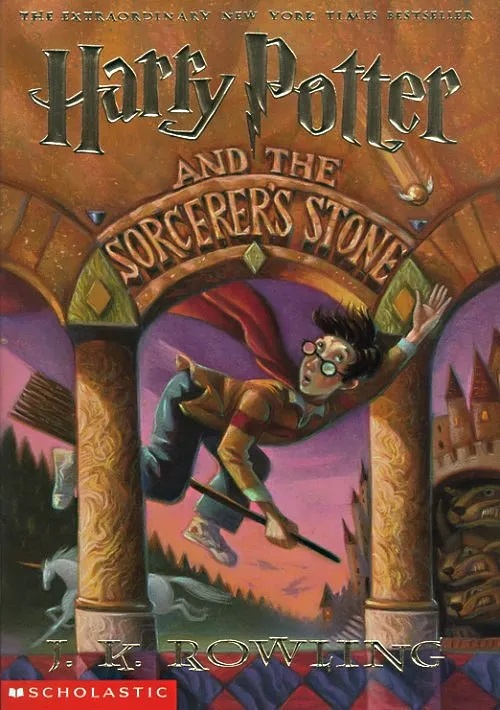
Lily’s personal story, I realized, was one of learning strength. She begins as a “mouse” of a princess, in her own words: shy, quiet, and having passively accepted her parents’ controlling behavior her whole life. But as she grows she learns to stand up for what’s right. She stands up to Brett, she stands up to her father, and she stands up to her best friend Clarice. And that’s when I really fell in love with her as a character.
Jonathan’s Adventures
The main part of my book, obviously, is the story of Prince Jonathan’s adventures throughout his immortal century. Readers of the book will notice, however, that large swatches of his story are left out and the plot regularly jump ahead a decade or so at a time.
It wasn’t always this way. I wrote many, many more adventures that he had throughout his century. However, as the book got longer and longer, I had to pare down those extra scenes significantly. I mostly only kept scenes that specifically pertained to trying to wake up Lily, or to Snow White and her family line, including Queen Gwen. It was the best decision and really gave the book great focus and direction while cutting out a lot of the fluff. But I love a lot of that fluff, and it still exists in my heart (and many notes).
Some of his other adventures include, but certainly aren’t limited to:
- He Attended the University: in the finished book, we see Jonathan attending the university once to study dragons in the hopes of finding dragon’s breath, and he mentions that he’d already attended about a decade previously to study fairies. In my other notes, I had it written that he attended the university regularly throughout his century, each time studying some new interest. He also always studied swordsmanship every time that he went, learning from each newly-employed sword master there. After doing that seven or eight times, I assume that Prince Jonathan is quite literally the greatest swordsman in the entire world, not to mention highly educated on a wide variety of topics.
- He Met Other Fairies: partly to do with his study of fairies at the university, Jonathan met several other fairies besides Queen Mab. His intentions here, and in studying them, was actually to learn about Mab and gauge her trustworthiness. And, of course, he always asked every fairy that he met if she had any dragon’s breath, with no success.
- He Dabbled in Black Markets: in his search for dragon’s breath, Prince Jonathan regularly delved into black markets run by dangerous and shady people selling dangerous and shady things. I detailed that sorcery was accomplished by using the magic and powers of outside sources, such as using dragon’s breath for a spell, compared to witchcraft when the magic comes from within your own magical self. Sorcerers didn’t have a very good reputation, but Jonathan found himself in cahoots with many throughout his travels, always looking for dragon’s breath. It was dangerous work, trying to be subtle and sneak around such a dangerous crowd, but he did it regularly.
- He Met Elves: when human sorcerers didn’t have dragon’s breath for him, Jonathan also went to ask elves. Elves have a history of fighting with and hating dragons, but are also highly magical in this world, so they were the most likely to have access to dragon’s breath. As interesting as I found these encounters, they ultimately were cut from the final manuscript.
- He Worked with Dragon Hunters: this was a large portion of his story for a long time, but for sake of timing I trimmed it down significantly. But I detailed his working relationship with the dragon professor from the university and the connections to other dragon hunters that his professor set up for him. This work was both illegal and dangerous, as it would likely incur the wrath of other dragons and incite dragon attacks. So this kind of work drew a lot of greedy, dangerous, criminal men. Jonathan spent several years designing, with his professor’s help, the weapon that catapults a net so as to capture a dragon without killing it. Later, he went on many hunts with fellow dragon hunters and learned everything he could from them. However, they were always more interested in killing dragons rather than collecting breath from them, so Jonathan eventually went his way and began hunting dragons on his own, which we see in the finished novel.
- He Worked a Lot of Odd Jobs: part of the draw of his immortality was that he finally got the chance to do what he’d always dreamed of as a child: explore the world. And he did! He worked all over the world whenever he felt like it. He most often worked for trading caravans either as a merchant or bodyguard, as it was a good place to watch for dragon’s breath coming or going. He also took a lot of sailing jobs along the coast, which were always his favorites. Being such a good swordsman, he worked often as a guard for wealthy families, but he was also well educated and so he helped track the finances for companies just as often.
- He Burned Apple Trees: when he found out that the fast-growing poisoned apple trees had breeched the Relderland valley and were growing into Candlewood and Swendon, Jonathan spent many years burning them down. He traveled the border of the ever-growing forest, burning every single apple tree he could reach. Then he’d turn around and go back along the border again from the opposite direction. Back and forth, back and forth he went.
- He Went on a Religious Pilgrimage: in my previous novels and stories that took place in this same fictional world, I created a religion for my fictional humans to follow (with varying degrees of faithfulness). So I wrote that Prince Jonathan, out of curiosity more than anything else, studied this religion quite deeply for some time. He even went on the annual religious pilgrimage to mark the anniversary of the gods descending to meet and teach man morality.
As you can see, writing this book was a big deal and it went through many different variations. Overall I know that I made the best decisions for the final book, but I still think about some of these different versions from time to time and imagine what could have been. What do you think about some of these other ideas?
Thank you for checking out my new book, “Awaken.” Enjoy!
